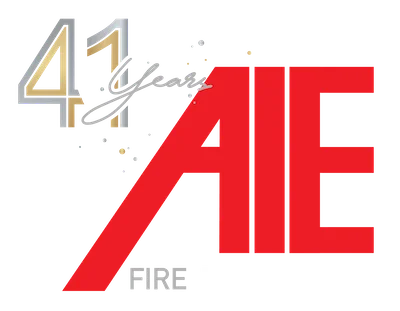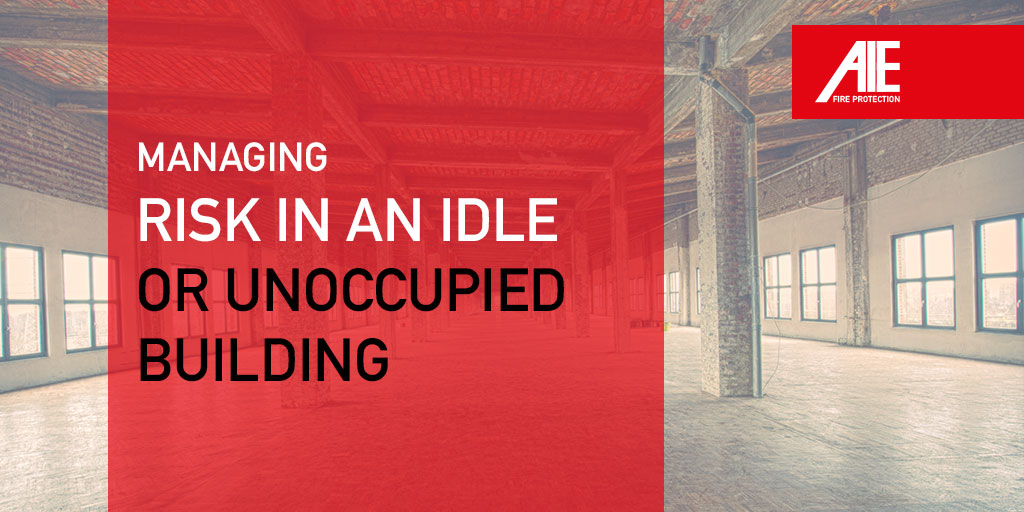Are you the owner or manager of temporarily unoccupied property or vacant commercial buildings, restaurants, or retail stores? Whether your tenant’s business or your own has been forced to close because of recent events or the building has been unoccupied for some time, it is imperative to consider fire risk management and how to protect vacant commercial property as there are many differences between an operating property and an idle building.
How to Practice Fire Risk Management: Unoccupied & Vacant Buildings
Many factors need to be considered regarding fire risk, water damage, environmental issues, theft, squatters, and vandalism in your unoccupied building, as well as the potential costs associated with these commercial property threats. Be sure to:
- Check your commercial property insurance for vacant building specifics.
- Increase security for vacant buildings.
- Inspect the vacant property daily, or as often as possible.
- Continue to check fire extinguishers and inspect fire systems regularly.
By incorporating these steps to minimize risk and protect your assets in an idle, unoccupied, or vacant commercial building, your property should remain intact and safe until you can return to business-as-usual.
#1 – Verify Insurance to Protect Vacant Commercial Property
If your commercial building is unoccupied or about to be, contact your insurance company to learn how your policy treats unoccupied vs vacant, and what your liability exposure is for those who may become injured while in/on your idle property. Discuss your vacant commercial property insurance options or additional fire insurance with your insurance provider.
Amending your insurance policy as needed can help mitigate any potential costs/liability if anything should happen. We recommend property management or owners contact the insurance company as soon as possible to ensure there are no insurance risks or additional liabilities. You don’t want to protect vacant commercial property.
#2 – Step-up Commercial Vacant Building Security
The second, and probably the most important step to greatly reduce or even eliminate risks is to step-up vacant building security. Visible security is a crime deterrent. Security systems with intrusion and motion detection, glass-break monitors, and video surveillance are typically recommended, depending on your facility.
Some insurance policies may even require CCTV with 24/7 monitoring services that interface with local law enforcement authorities and building owners. Most security systems also have fire sensors that alert the fire department when needed. Your security needs will depend on the type of commercial building you’re in, so consider these additional security prevention measures. Check with your insurance provider to see what is necessary for your vacant commercial properties and buildings. Each policy and provider has different requirements.
Other security measures for vacant property management:
- Monitor the property physically (in addition to cameras), daily.
- Add security devices and/or heavy-duty locks to all potential entry areas – windows, trap doors, large vents, gates.
- Change existing passcodes and locks on doors and gates.
- Control who has access, disable keycards, record visitors.
- Notify local authorities that your building is/will be unoccupied.
- Cut back hedges to make it less likely for intruders go unseen.
- Manage lighting (interior/exterior) with timers.
- Engage a nighttime security company.
- Remove safes and any other moveable, valuable items out of building.
- Reroute mail and check for packages.
- Isolate water, gas, and electric supplies and accessibility
#3 – Inspect Building Daily Using This Checklist
You may assume your vacant or unoccupied store or restaurant isn’t attractive to squatters or at risk of damage, theft, or arson, but there are no rules where criminals are concerned. An idle or unattended property is an invitation to take shelter, set up camp, steal anything of value (including copper and metal wires), and set fires, which increases the risks of major loss and injury.
In fact, according to the National Fire Protection Association (NFPA), about half of all vacant commercial building fires are intentionally set.
To minimize risk, avoid significant loss, and increase the chance that your property remains free of criminal activity and other hazards, go inside your vacant property daily to do a walk-through. Though most security systems are very reliable, it is still best practice to physically inspect the premises for things cameras may not see, such as:
Broken windows, doors, locks
A leaky water pipe or sprinkler head
Non-working lights; especially those on timers
A fire alarm that isn't working
A toilet that continues to run
Electrical shorts or issues
Gas odor
Mold/mildew
Unwanted pests (keep up pest control)
Outdoor fire and structural hazards (weeds, overgrown brush, crumblin
Roof and/or storm/water damage (as needed)
Signs of squatters that are out of camera-reach.
#4 – Mitigate Fire Risks in Vacant Commercial Buildings
According to the NFPA, from 2011-2015, U.S. fire departments responded to an estimated average of 30,200 structure fires per year in vacant commercial buildings. These fires resulted in an average of 60 civilian deaths, 160 civilian injuries, 3310 injured firefighters, and $710 million in direct property damage per year. These are more prevalent risks than you might think.
A fire is extremely difficult to come back from. Many companies permanently close as a result. You must take steps to practice the best vacant building management, mitigate the property risks, and manage the potential challenges.
To raise the chances that your business is safe and secure while idle, incorporate the first three steps above, check your fire extinguishers regularly, and continue with quarterly NFPA-required fire alarm and sprinkler system inspections.
Other Steps to Mitigate Fire Damage and Hazards:
- Remove combustibles in storage to decrease explosive fire danger.
- Maintain a building temperature of at least a 40°F so sprinkler system pipes do not freeze.
- Keep sprinkler systems in an unlocked, open position, or they will be rendered useless.
- For water supplies that rely on fire pumps, ensure the fuel or power to water pumps is maintained and the pump itself is maintained and tested per NFPA 25.
- Sprinkler system waterflow alarms, automatic fire detection, valve tamper alarms, and fire pump alarms must remain in service and monitored by a central station alarm company. Alarms should be maintained and tested per NFPA 72.
- Check that the fire pump is in automatic mode and fuel tank is full.
- Make sure fire doors are closed.
- Lock all fire protection control valves and conduct regular inspections. Automatic sprinkler impairments should be managed using a formal impairment program.
- Inform the fire department of the facility’s idle or vacant situation and provide access, when necessary.
Property owners and managers must know the unoccupied building risks and liabilities in order to ensure your location’s safety and security. Use this as a checklist when going through your property to reduce potential damage or significant loss.

Protect Commercial Buildings with Vacant Property Management
With so many businesses being forced to close until further notice, it’s important to understand how to best practice vacant property management. Now that you know how to manage the inherent risks involved with unoccupied buildings, such as a retail store or restaurant, you can keep your business fire-safe and operational. We are here to help you work through the challenges and liabilities.
Armed with the knowledge and ability to avoid fire risks and additional hardships, you can be ready for business at a moment’s notice. If there’s anything AIE can do to help with fire protection or life-safety, please feel free to contact us today. 800-892-9863
Information posted in our blog is merely for educational and informational purposes. While the information has been verified to the best of our abilities, we cannot guarantee its total accuracy, and it should not be considered legally binding advice. This blog is not intended as a substitute for professional advice, and should you decide to act upon the information, you do so at your own risk.


Recent Comments